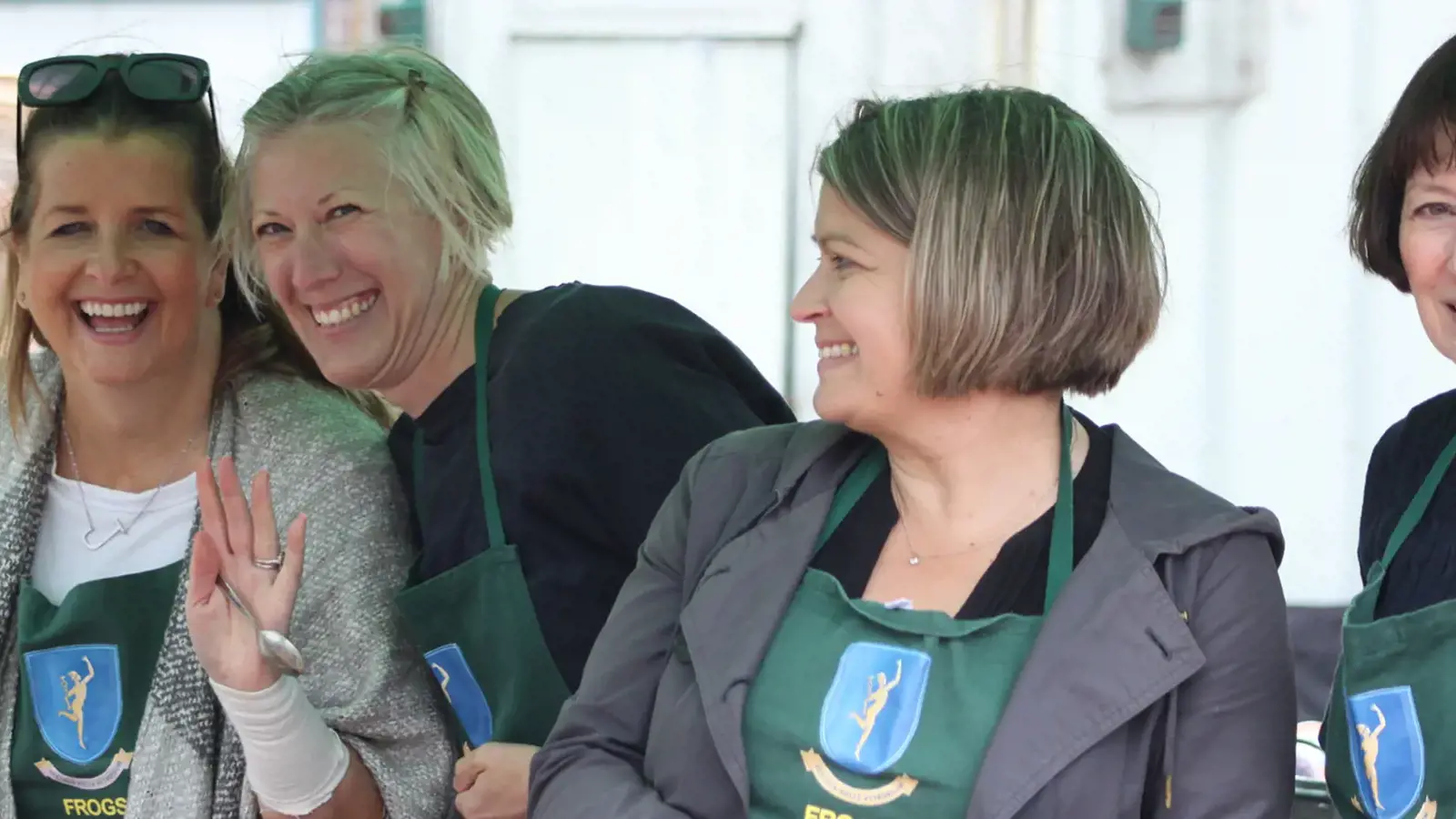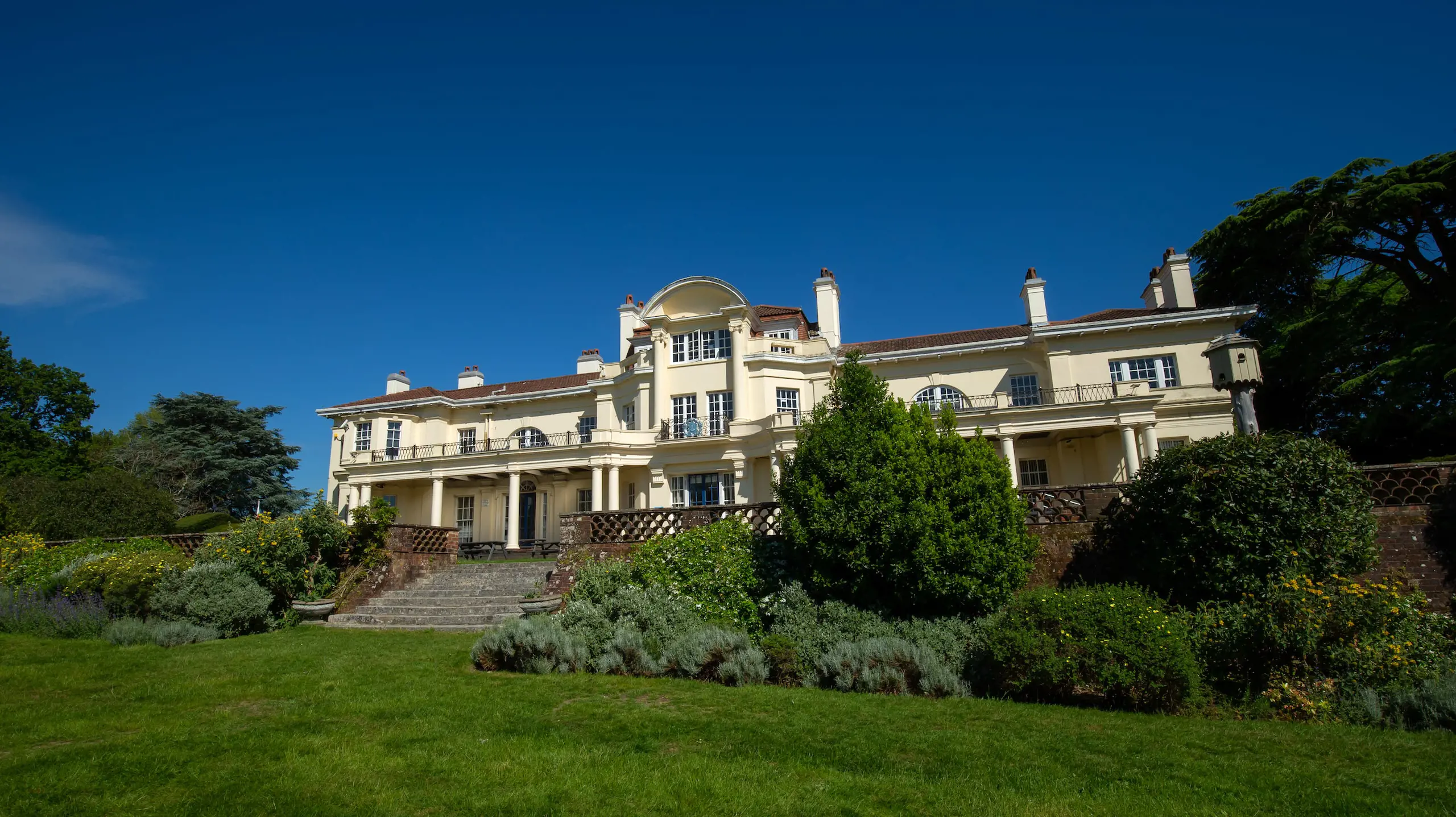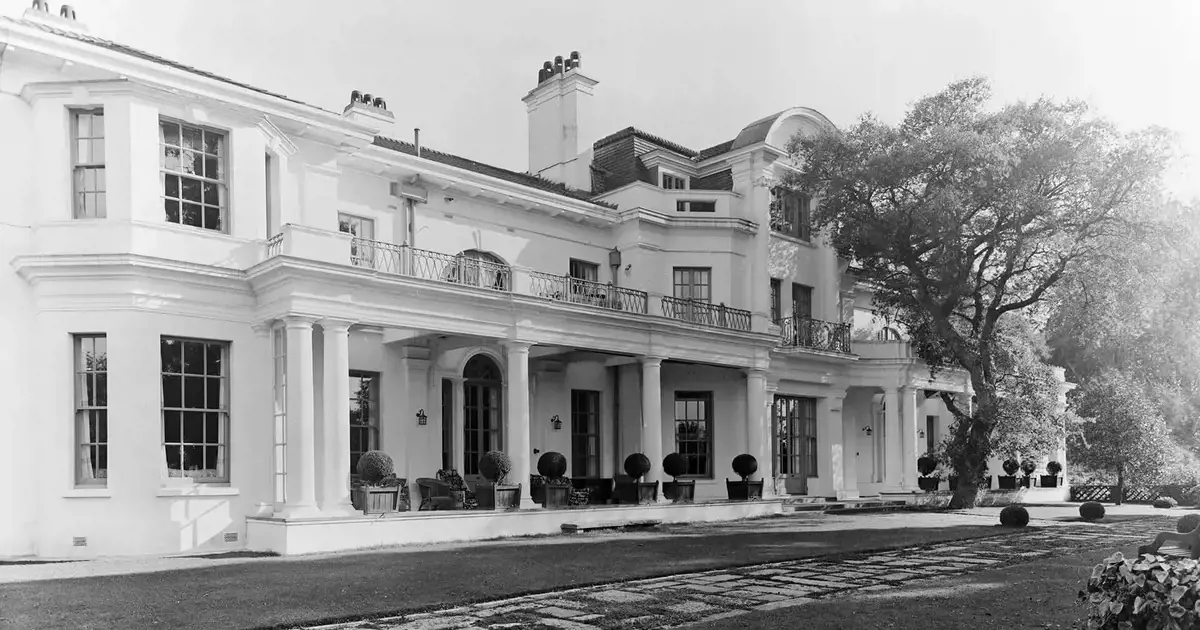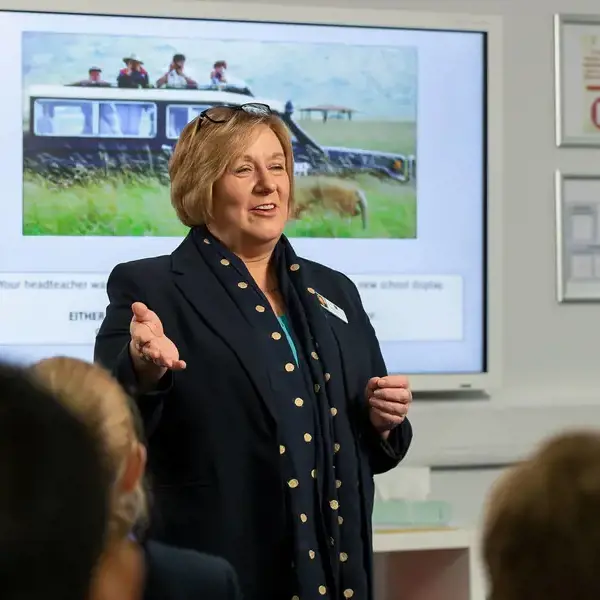School History
A potted history of The Gregg Schools including Townhill Park House.
In 1939 The Gregg School was situated in Grosvenor Square, Southampton where they had been for some years. When The Echo office was bombed on November 30th 1940, the School placed three rooms at the Echo's disposal, with seven typewriters for their reporters and admin staff to use.
In 1941 the Admiralty requisitioned the building and the School was moved to Rockstone Place where they stayed until July 1945 when they moved to Winn Road.
The commercial department of the School returned to Grosvenor Square in January 1946, whilst the rest of the School continued at Winn Road, where The Gregg Prep remains today. The Gregg School (senior) moved to Townhill Park House in 1994.
Townhill Park House is the former home of Lord and Lady Swaythling. The building dates from around 1790 and was extended and re-designed by the architect L. Rome Guthrie in an Italian-style in 1911; Guthrie also designed the terraced gardens to complement the style of the house, with planting plans produced by the noted plantswoman, Miss Gertrude Jekyll. Guthrie returned to Townhill Park House after the First World War to add a music room, panelled in polished walnut, and a boudoir for Lady Swaythling.
Guthrie also designed a garden at the rear of the house which became known as the Boudoir Garden. Queen Mary, a close friend of Lady Swaythling’s, visited Townhill Park House on a number of occasions, regularly enjoying a walk through the gardens.
The house was passed to the Red Cross in 1939 and became an impressive convalescent home for British and American soldiers during the Second World War.
Middlesex County Council owned the house from 1948 until 1969, when it was used as an education centre for underprivileged children.
Between 1969 and 1984, Townhill Park House was used for training marine cadets.
Townhill Park House in World War 2
The following information has been extracted from the book ‘Townhill Park – The Life and Times of a Gertrude Jekyll Garden’ by Rosaleen Wilkinson. The School greatly appreciates the research undertaken by Roseleen so that we are able to better understand the history of the beautiful estate we work and study in. If you would like to purchase a copy of the book, please contact ssa@thegreggschools.org.
The onset of World War II brought dramatic change for the family at Townhill.
The Lord and Lady’s marriage had ended and their children were sent abroad for safety. The Swaythlings were very much aware of the treatment of Jews in Hitler’s Germany and knew that as a prominent and wealthy Jewish family, they would certainly be in great danger if the invasion succeeded. It was decided that it would be wise to take the children out of the country to a place of safety, and arrangements were made with friends abroad. Lord Stuart’s children, Jean-Mary, David and Anthony went with their aunt, Vi Henriques, and her two children to Bermuda, whilst their cousins Jennifer and Jeremy went with their mother Iris Montagu (the wife of Stuart’s brother Ewen) to Boston, America.
Lord Swaythling cleared the house of its beautiful furnishings, antiques and pictures and made it over to the Red Cross as a military convalescent home for the duration for the war.
Lord Stuart continued to hold his position as a partner in the family firm, Samuel’s Bank, (until 1954) and was also a Magistrate in Southampton from 1928-1948. Lord Stuart also managed the essential work on the farms on the estate as food production was more important than ever. He relinquished his comfortable rooms and set up living quarters in the basement of the house, by the back door. He slept down there and used the servants’ dining room.
Soon after the start of the war, groups of men banded together to form the Local Defence Volunteers, later called the Home Guard. These groups were made up of men who were too old or too young to go into the ordinary services, or who were employed in essential reserved occupations such as agriculture or manufacturing defence equipment. Lord Swaythling was in charge of one of these groups on the Townhill Estate which comprised a lot of the estate workers, there were about 20-30 men in total.
Home food production became vital during wartime as German submarines attacked convoys of cargo ships bringing supplies to Britain. The kitchen gardens and farms at Townhill played their part in supplying markets in Southampton, and a stall was set up in the yard to sell vegetables to local West End people. The staff continued to cultivate to the highest standards, despite the war.
Ronald Aslet, who worked at Townhill as a gardener during the war, described what it was like:
“Of course quite a few things changed in the gardens because of the war. They kept the grass cut, but a lot of the flower gardens were taken up with vegetables, we had to do it for the war effort ‘Dig for Victory’ and all that. The rose garden was still there, but we had onions in the Sunk Garden with the pergola. It was nice and sunny there and the soil was sandy. We grew a variety called Ailsa Craig. I used to walk through the Sunk Garden to the field below it where we grew sprouts.
We had a stall in the yard where we sold vegetables to callers, and sometimes I was sent down to pick a few more for customers. There were also two chaps who worked on their own growing larger quantities of vegetables away from the main gardens. They grew cabbages, runner beans and peas, a quarter acre field of each.
With a shortage of labour, we had three Women’s Land Army girls working at Townhill. They were a bit older than my mate and I, so we didn’t take much notice of them. Then later on in the war, in about 1943, we had Italian Prisoners of War. They were brought in the back of a lorry each day and they picked runner beans or peas, did hoeing, potato harvesting, whatever was needed.”
The Italian Prisoners of War who worked at Townhill during the hostilities were regarded with a certain amount of suspicion and dislike and nobody spoke to them. However, once the war was over, some POWs decided to stay in England and were not repatriated. Among them were several Germans who worked on the estate at Townhill. Friendly relationships were soon established between the ex-prisoners and their English hosts, particularly when children were involved.
Jean Marshall (nee Jury) worked as a Red Cross nurse at Townhill during the war.
“I was sent to Townhill (having applied for a transfer from Lymington Hospital where she had been for two years), I didn’t ask to go there, you couldn’t just choose in wartime. It would have been early in 1944, I remember I was there for D-Day, we heard it on the wireless there.
Townhill was a lovely place to be in. The men weren’t really ill any more but they had to have somewhere to stay before they were well enough to return to their units and go back to war. There was very little routine, there were one or two who needed temperatures taking and suchlike medical checks, but it wasn’t like a hospital at all. There must have been twenty or thirty nurses, all of us young. We slept upstairs in the (former) servants’ bedrooms on the top floor, two to a room. There were no doctors coming in, the patients went down to the Royal South Hants hospital if they needed assessment or treatment as such. We had two ambulance drivers attached to us, such nice girls, they were such fun.
They were strange times. The men weren’t miserable and depressed, they knew that once they were better they would have to go back to the war. We just ‘got on with it’ as you would say.
Lord Swaythling used to come down (from his house in London) every weekend. He was fetched from the station by car. He was a great big man, perfectly friendly to us, but I don’t think he went round the wards talking to the patients. He brought a man with him to look after him who was very old and tall. Lord Swaythling stayed below in the basement, he had a sort of reinforced room opposite the boiler-room. There weren’t many air raids by that time but there had been heavy raids earlier in the war. He would have prayer meetings at the weekends. I believe he was a very devout Jew.”
Eric Priestley was injured whilst holding the Front Line south of Caen aerodrome. He was hit by shrapnel from a German shell that hit the trees above him and his friends, suffering from 14 wounds. He was sent to Royal South Hants Hospital and Bradford Infirmary for operations and then on to Townhill to recover properly in October 1944.
“I went up to Townhill in an ambulance. Everybody there was convalescent. They really looked after us. I was upstairs in one of the bedrooms which had several beds. There was a dining room downstairs and a big wooden-panelled room where we sometimes put on concerts for ourselves. I used to do a comedy act, a skit on an actor called Sid Fields playing golf. It was an ideal place to be, right out in the country, it was beautiful there. All the nurses were very helpful, not at all strict. The patients were from all sorts of different regiments and we all had to wear a special uniform, blue with a red tie, to let people know we were wounded soldiers. The food was very good, it was rationed but well cooked, jolly good.
We used to go for walks in the grounds. I think I had my first game of bowling there in the gardens, there was a long strip of mown grass about half way down the garden, just before the section with a lily pond.”
Albert Rickman, who was injured in the Battle of Arnhem, recalls:
“I was in the Leicester Royal Infirmary for months and then I was sent to the Royal South Hants Hospital in Southampton. Once I was a walking patient, I was discharged to Townhill for convalescence, that was in February 1945. I’d never been in such a splendid place in my life before, it amazed me what a beautiful place it was. I’d never seen such a huge ballroom. There weren’t any pictures or ornaments around the house. I was in a room (Room 2) on the ground floor next to the front door, it was like a ward with four beds down each side, not like an ordinary room. The ballroom was a sitting room and a recreation room and the communal dining room was round the corner looking down the garden.
It wasn’t strict at all, if we wished to go out for a walk or were able to go out to the town or the village, that was all right. We had a uniform, hospital blues they called it, a blue jacket and trousers, a white shirt and a red tie I think. I was in plaster for a long time, I had a sort of stirrup set into the plaster to walk on. We didn’t have any medical treatment as such at Townhill though there was a physiotherapist to help you do exercises if you needed them. I had to go to South Hants Hospital to have my leg checked and to have the plaster removed. There was a nursing staff, Red Cross nurses. They would help patients who couldn’t walk properly, make the beds, things like that, but we didn’t get tea in bed, we weren’t bed cases and we had to get up and go into the dining room. There’s one nurse I remember, very pretty, she came from New Milton, which was quite near where I lived. She was called Nurse Jury.”
Mr Rickman and Mrs Jean Marshall (Nurse Jury) met again at an Open Day at Townhill some fifty-five years later.
Lord Stuart’s brother, Ewen Montagu, was a barrister, who served in Naval Intelligence for MI6 during the Second World War was involved in a most ingenious plot to deceive Hitler. It was named ‘Operation Mincement’ and inspired the 1956 spy film The Man Who Never Was. For more details, please click here to read the Wikipedia entry on Operation Mincemeat.
In 1945 Lord Stuart Swaythling married Jean Knox, who had been active with the Women’s Services during the war. For a time they continued to spend periods at Townhill, but gradually they realised that the house was unnecessarily large for their requirements and the house was put up for sale in 1948. It was bought by Middlesex County Council for use as a residential school for underprivileged girls.









